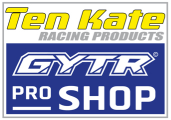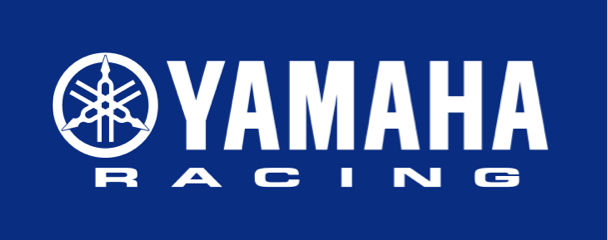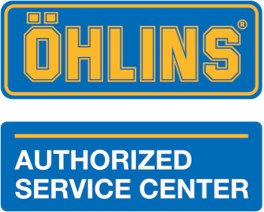TKRP ENGINE TUNING
About TKRP Engine Tuning
The tuning department of Ten Kate Racing Products is probably the most famous part of our company world wide. Already since our first appearance in the World Championship in 1994 we have always built our own racing engines. Not without success, as these engines have brought us 12 World Titles, numerous wins and many happy customers! From very fast track day riders all the way to the Gresini MotoGP team in 2013, our engines are being used everywhere!
After preparing exclusively Honda engines for many years, we started expanding our knowledge into Yamaha engines from 2016. This has been the base of our development towards the Yamaha YZF-R1 World Superbike engines that we have built for the 2020 season and the Yamaha YZF-R6 World Supersport engines that we won the 2021 & 2022 FIM World Supersport title with. Besides these top-spec engines we are also building engines for customers and teams world wide, according to their championship regulations or requests.
Find out more about our renownded tuning department below



TKRP Tuning
Performance for all budgets!
With over 30 years of experience in building, developing and using racing engines, we know what it takes to build an engine that is capable of winning. However, it is not always necessary to build an engine with the highest possible specs to significantly increase the power output. Especially with the high-level of stock engines nowadays, sometimes adjusting the fuel/ignition maps to your specific set-up can already be enough to be competitive in your championship. Below you can find a few examples on stages of tuning that can be done.
ECU fuel/ignition remapping
Motorcycle manufacturers usually cannot use an optimal ECU mapping in their bikes, in order to match the strict emission standards for street use. Besides that, no engine is exactly the same. Therefore you can already make a big increase in power and torque by installing for example a power commander or preferably kit electronics on your bike. This enables you to optimally adjust the ECU mapping to your specific bike. More info on this can be found here.
Engine blue printing
Even when your regulations state that the engine needs to be stock, there is probably something to improve. Engines are being assembled in a factory with loads of parts. There is always a little product deviation in these parts, where for example one piston can be just a little bit heavier than the other. Normally this will not be noticable, but for racing engines this can be just the difference between a good engine or a great engine. By measuring and weighing each of the moving parts like conrods and pistons and making sure all of them are exactly the same weight or even by just changing the order, the engine runs smoother and performance will improve which can be just your advantage in a stock class.
Cylinder head porting/flowing
When your championship regulations do accept engine tuning, the first step is cylinder head porting. When preparing racing engines, a lot of time is spent in optimizing the airflow through the engine. This starts of course by installing an open exhaust system and a racing air filter. However, the shape of the inlet and exhaust ports is key for the airflow and very much decides the engine characteristics and performance. As you can imagine, this is one of the main factors that differentiate one tuner from another.
Engine upgrading
When you want to get the most from your engine, there is no other way than to upgrade the internal engine parts (and perform all the above steps as well). Depending on the engine and how far a customer wants to upgrade it, there can be multiple ways of upgrading the engine. Normal upgrades usually include racing kit camshafts, camshaft sprockets, valve springs, a thinner head gasket, racing spark plugs and air funnels. Of course this is combined with a racing radiator (preferably with oil cooler), cylinder head machining, blue printing, camshaft timing, racing air filter, an open exhaust system and kit electronics with an adjusted map. When requested this can be pushed further, especially for Superbike engines.

TKRP Engine Servicing
Keep your engine in good condition!
The life of a racing engine is hard. It is always in a high RPM range, often gets very warm and it's generally always pushed to the max. To prevent the engine from wearing unnecessary and maintain the power, the best you can do is get it serviced regularly. For stock engines we usually keep the service intervals around 2000km. For tuned engines, we service the engine every 1500km. In our long experience servicing and rebuilding engines, we found that performing service at these mileages prevents a lot of potential damage to the engine and usually keeps the service costs lower than to wait for the engine to break. Besides that, what is more frustrating than leading the race but having to retire because of an engine failure?
'Engine service' is of course a widely used term, but what is actually being done? In case an engine is brought to us for regular service, without any issues, the bottom part of the engine remains largely untouched. The below things are usually being done:
- Cylinder head taken off and freshend up;
- Checking the valves;
- Valve seats cleaned;
- Oil pan taken off so gearbox can be visually checked;
- Clutch checked;
- Spark plugs checked.
After that the engine gets reassembled with a new head gasket, new high quality oil (according to the engine specs) and a new oil filter.
During these activities our engineers always keep an eye open for something unusual. In case they come across something, they will always get in contact with you and advice on any further steps to take.



